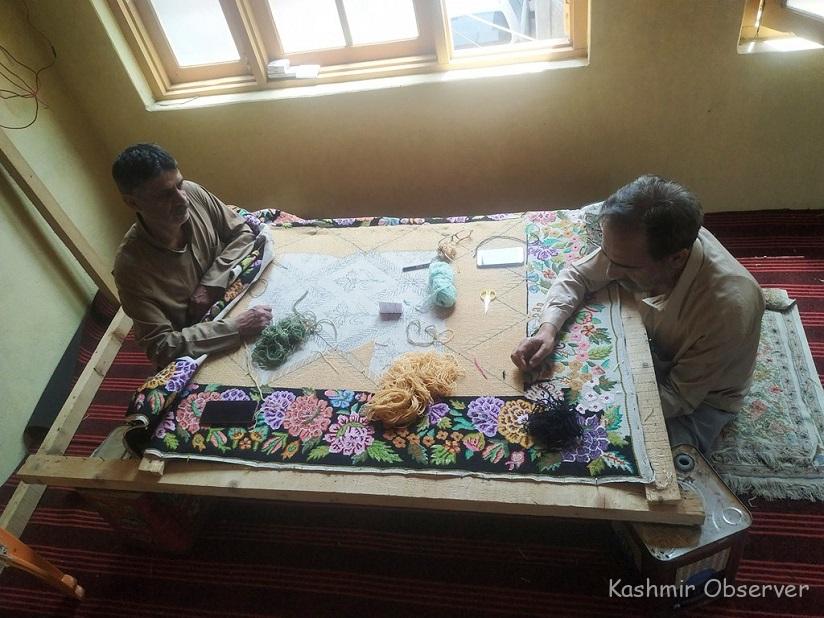
Months after Srinagar earned UNESCO creative city tag under crafts category, the citadel of Kashmir Arts is showing signs of tapestry revival sparked by a scheme and siblings.
By Saima Shakeel
A jigsaw puzzle emerges through heritage houses with medieval battered windows, across shopkeepers discussing their usual jobs in small-sized shops, through primitive bridges that sprawl across the calmly running waters of the Jhelum, connecting the old city of Srinagar.
In this longstanding lifestyle of Shehre Khass, the two brothers are busy holding skill-training in their home at Fateh Kadal area.
The session is sparked by the idea of tackling the growing rate of unemployment in Kashmir with the skill empowerment.
In their mid-fifties, Mehraj-Ud-Din and Mohammad Hussian are among the last remaining tapestry artisans of the city fasting losing its cultural characteristics in the contemporary pace of life. However, the siblings are stimulating the skill to serve the society and salvage its future prospects.
They’re imparting skill training to the young generation under the Karkhandar scheme—providing a forum for people to study Kashmiri handicrafts.
“There’s a keenness among young Kashmiris to learn the skills due to the miserable market reality and the growing rate of academic unemployment,” says Mehraj with a thoughtful face. “Skill and scheme is a striking deal to keep the creativity alive.”
Although learning art of tapestry in six months is a very short time under the scheme, Mehraj continues, it’s still a very welcome move to pass on the skill to next generation.
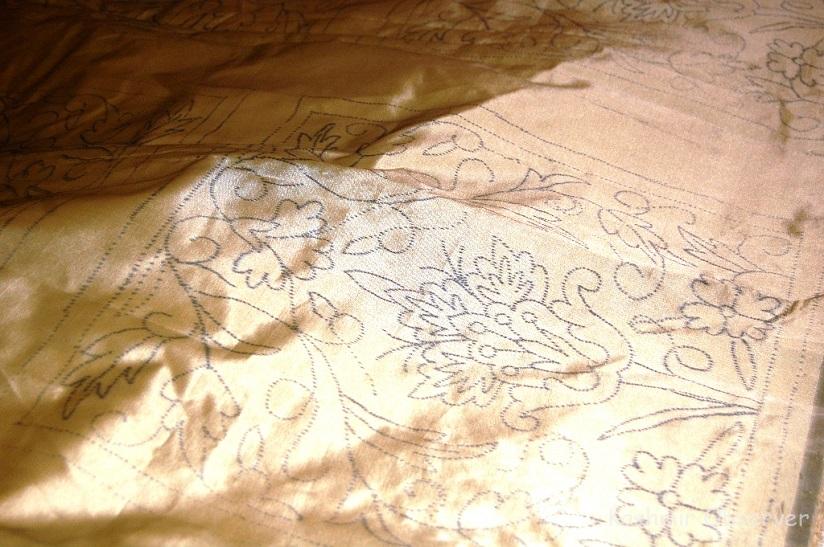
The siblings—“the silent servants of art”—state that there should be suitable training programmes and mentors for making tapestry appealing to the young generation.
“Both of us were offered several projects and possibilities outside Kashmir,” Mehraj says, “but we rejected everything for the sake of this art. It’s our ancestral call and identity.”
If Mehraj is a craftsman with a cheerful deposition, then Hussain is a meditative worker—deeply immersed in the details of his art.
He takes a seat, draws in a deep breath, and starts narrating his tale of tapestry.
“This is a family-owned business,” he says. “My grandfather and father were smalltime tapestry traders running their own firm. This is how we became its heritors.”

Back in 1970s, Hussain says, Srinagar was brimmed with tapestry craft, with Fatah Kadal and Nawab Bazar its stronghold.
“Foreigners would pay great rates in acknowledgement of the artisan’s diligent efforts,” he says, “and the marketplaces would be overwhelmed with high quality and diversity of tapestries.”
Such was the demand that tapestries would be equally made by artists as well as part-timers — showing how diverse the options were back then. It was a sunshine enterprise before the armed strife of nineties brought it to a standstill.
“Prior to the 1990s,” Mehraj continues, “foreign luxury designers would visit us and purchase directly from the artists. But when the situation worsened, the demand for all Kashmiri crafts dipped. Our customers would not come to see us and created an existential crisis for us.”
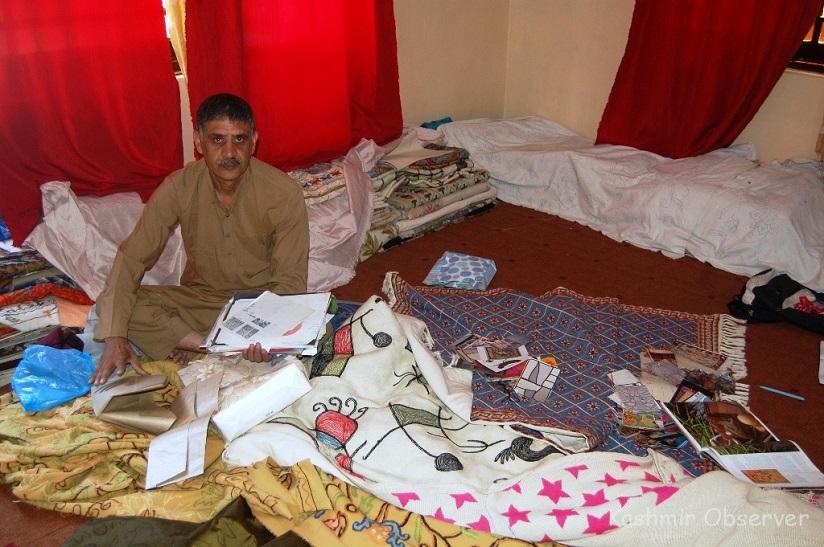
Despite the new technology now making the Kashmiri Arts purely a machine-drive venture, tapestry remains untouched. It’s handcrafted and requires a great deal of effort.
But now, the brothers believe that the changing trends are disrupting the market and denting the long-term skill investment.
The brand cashmere, however, is still their hope.
“Despite a cheaper Chinese tapestry copy sweeping the market,” says Hussian, “nothing can match our craft mastery and art-form. It just requires a support to thrive and recreate its global appeal.”

The Karkhandar scheme is seen one such attempt to stimulate the skill and revive the artform. Such initiatives, the siblings stress, will only empower the educated youth of Kashmir facing the heat of joblessness.
Hussain’s eyes glint with memories when talking about his generation’s devotion for skill.
Unlike the current generation grappling with the grief of livelihood, his was an empowered and stress-free. “We knew the value of skills in life, so did our parents,” he says. “It made us feel empowered and second to none.”
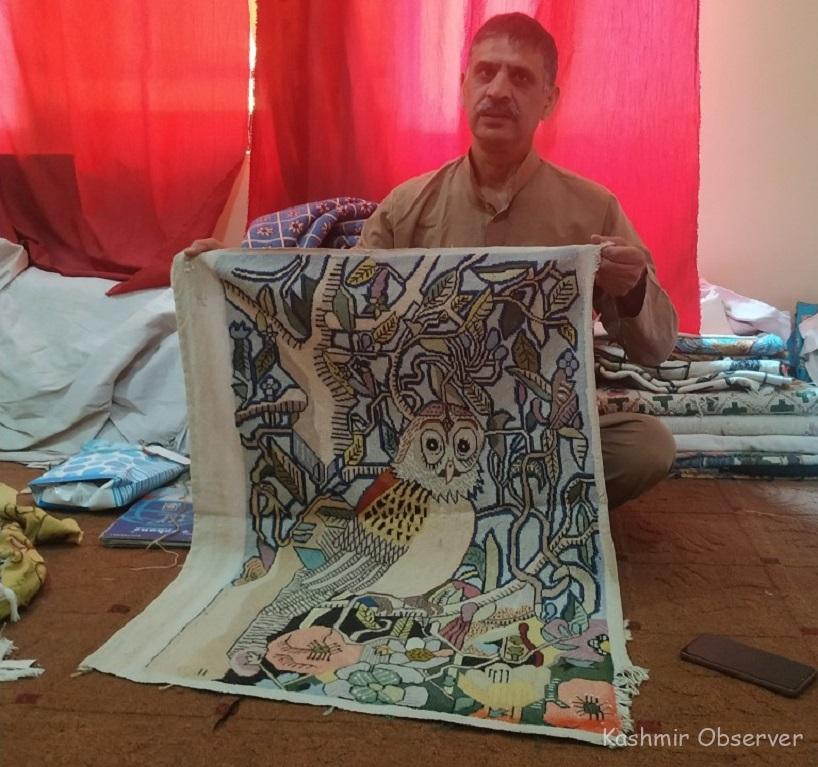
And to practice the same “empowering” artform, the artisans would construct a temporary wooden frame. Then, a Naqash, or a designer, would gently place a tracing paper over the canvas and dust it with a duster dipped with temporary ink.
“Our canvas is blueprinted with a variety of motifs,” Mehraj explains the process. “We buy two- or nine-ply woolen yarns from the market and dye them. And then we start embroidering our canvas—threading it in cross-stitches or petit-points. Once done with colouring, we sent the fabric for washing. This is how a tapestry gets ready as our wall and floor decor.”
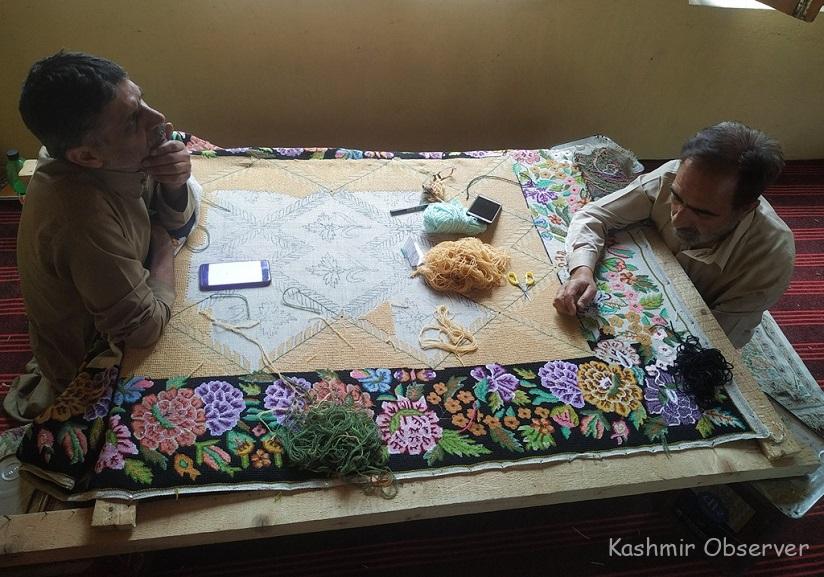
However, despite scheming the skill, the sad part remains, not many are drawn to tapestry nowadays.
There must be over 100 tapestry artisans dispersed across Srinagar, Mehraj says, but none of them are producing any tapestries anymore.
“How can we expect our fellow artisans to collaborate with us if the trade does not provide them with sufficient income to feed and educate their families,” Mehraj says. “Wages are ultimately what feeds the stomach and runs households.”
To maintain balance in their life, the siblings are working on the various other Kashmiri handicrafts, like chain-stitching, crewel-curtains, makhmal-crewel curtains, bedcovers, and more.
“But we’ve not forgotten tapestry art,” says Hussain. “We’ve recently completed one masterpiece that we want to show as a representation of Kashmir’s tapestry work.”
Whatever the circumstances, the brothers believe, the effort and art should not be overlooked.
“If the government provides any assistance or instructions in reviving of this tapestry art,” says Mehraj, “we’re confident that many artisans will step forward to assist in the revival of this art form.”
Follow this link to join our WhatsApp group: Join Now
Be Part of Quality Journalism |
Quality journalism takes a lot of time, money and hard work to produce and despite all the hardships we still do it. Our reporters and editors are working overtime in Kashmir and beyond to cover what you care about, break big stories, and expose injustices that can change lives. Today more people are reading Kashmir Observer than ever, but only a handful are paying while advertising revenues are falling fast. |
| ACT NOW |
| MONTHLY | Rs 100 | |
| YEARLY | Rs 1000 | |
| LIFETIME | Rs 10000 | |













